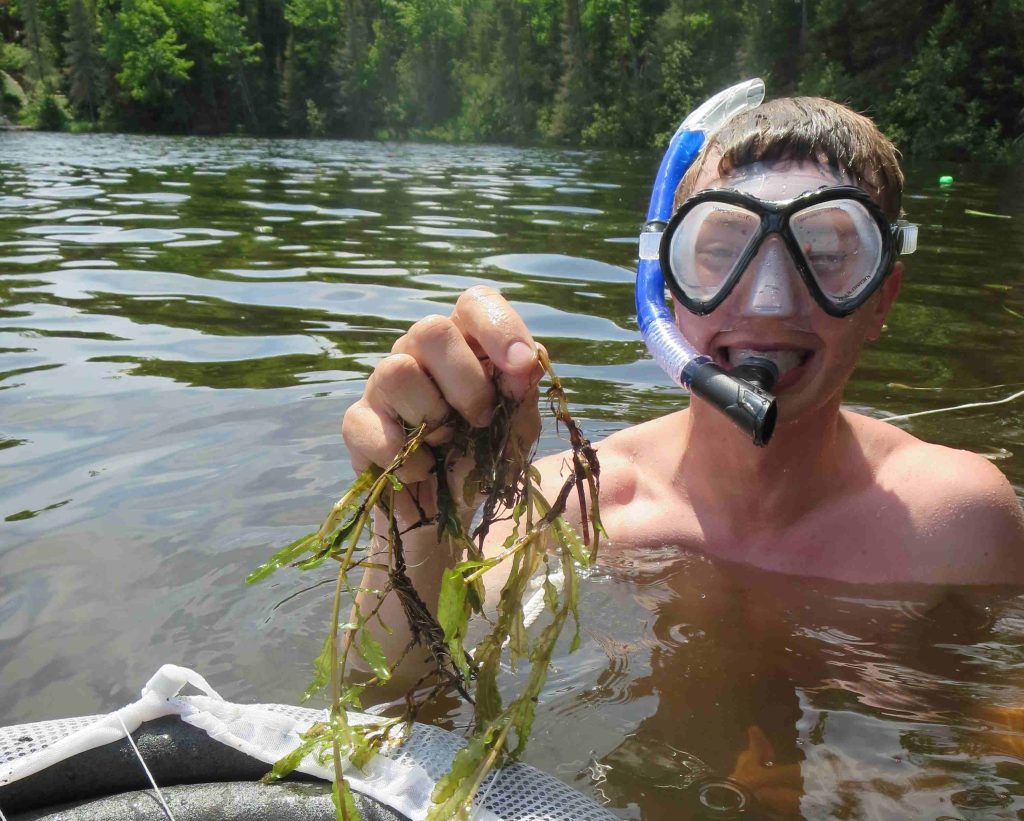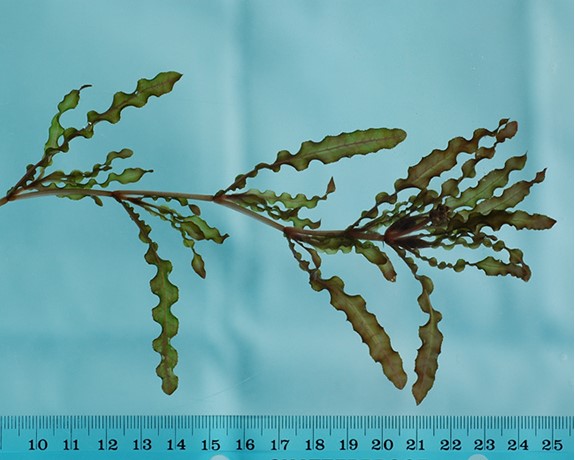Curly-leaf Pondweed
Curly-leaf Pondweed at a Glance
The Plant:
A submersed perennial, (Potamogeton cripus). Prefers water depths 3’ to 10’. Can grow under the ice. Grows under many conditions, including in moving water.
The Problem:
Invasive! Capable of forming large colonies. Can crowd out native plants, impede boating, and swimming. Upsets normal biodiversity. Mid-summer die-offs can cause algal blooms.
How It Spreads:
Plant fragments, seeds, and especially through turions--the vegetative bud, a hard dormant plant shoot that looks like a burr or pine cone.
Similar Looking Plant:
Clasping-leaf Pondweed plants have wavy leaves, broader near the base. Curly-leaf Pondweed leaves more resemble lasagna noodles.
First Discovered:
2010 in Rice Creek and Island Lake. By a Volunteer Monitor!
Control Methods Used:
Hand pulling; pulling while snorkeling; diver assisted suction harvesting (D.A.S.H.); chemical treatments.
Chemical Treatments:
2012, 2013, 2014, 2015, 2016.
Where Identified:
At one time or another, confirmed plants or colonies have been found in Rice Creek, Stone-Rest Channel, Spider-Island channel, mouth of the Manitowish River by Island Lake; Rest, Fawn, Stone, Manitowish and Vance Lakes. A floating sample was found in Alder Lake; an unconfirmed report in Trout River/Alder Lake area was reported.
Non-connected Water Bodies:
Through 2023, meander studies or visual monitoring done in Chub, Circle Lily, Little Bass and Dog Lakes have not found Curly-leaf Pondweed.
Need for Volunteer Monitors:
Yes! Curly-leaf Pondweed can only be controlled if we know where it is. Onterra LLC and Discovery staff cannot be all places, all the time. Volunteer monitoring is vital.
It is critically important that control efforts are supplemented through monitoring of our waters to ensure that appropriate steps are taken to limit or prevent the spread of Curly-leaf Pondweed.
Join the effort, contact [email protected] or
Curly-leaf Pondweed in Manitowish Waters
History.
Curly-leaf Pondweed was first detected in the Manitowish Waters Chain of Lakes in 2010 in Island Lake and Rice Creek by a volunteer monitor and ‘Lake Captain’ trained by Discovery Center staff. In 2011, two additional areas were identified, at the mouth of the Manitowish River at Island Lake and in the Spider-Island Channel. In 2012, Onterra, LLC found additional areas in Spider Lake and Island Lake while mapping the quantity and variety of aquatic vegetation. An additional colony was found in Stone Lake in 2012 which was hand-pulled by Discovery Center staff and volunteers.
In subsequent years, plants or colonies were identified in the Rest-Stone Lake channel and in Rest and Fawn Lakes. A single colony was found in Manitowish Lake and a non-rooted floating sample was found in Alder in 2021. In 2023 Curly-leaf Pondweed was reported in the Trout River/Alder Lake area, but subsequent surveying did not find floating or rooted plants. In 2022, the first finding of a colony of Curly-leaf Pondweed downstream of the dam was found in Vance Lake.
Control Efforts:
Over the years, multiple control and removal methods have been utilized, depending on the quantity of plants and their location. Hand pulling and removal while diving have been utilized extensively by trained Discovery Center technicians and staff. Professional divers have also been hired to assist. D.A.S.H, or diver assisted suction harvesting was done in 2021. In this method divers remove the plants by the roots and feed them into a suction hose. Entire plants are then transported via suction to the deck of a collection boat, at which point the plants are pumped directly into large mesh containment bags.
Early in the spring of 2012, a certified applicator conducted a chemical treatment of the curly leaf pondweed infestations in Island Lake and the Spider- Island Channel. The treatment was unsuccessful. That treatment was repeated in 2013 using different parameters for the application of the chemicals. Chemical treatments were also done in 2014, 2015, and 2016 in different areas. No further chemical treatments have been done since 2017.
In 2022 a large patch was found in Vance Lake along the northeastern shore. In 2023, a group of volunteers with assistance of the North Lakeland Discovery Center Woods and Water staff performed hand pulling.
The Path Forward:
Control efforts in Vance Lake will continue as well as at other sites where Curly-leaf pondweed is present. Monitoring and surveying will continue following the plan established in the Manitowish Waters Chain of Lakes Comprehensive Management Plan, Dec. 2019.
Curly-leaf Pondweed Video
Watch the Curly-leaf Pondweed video prepared by Discovery Center staff.



